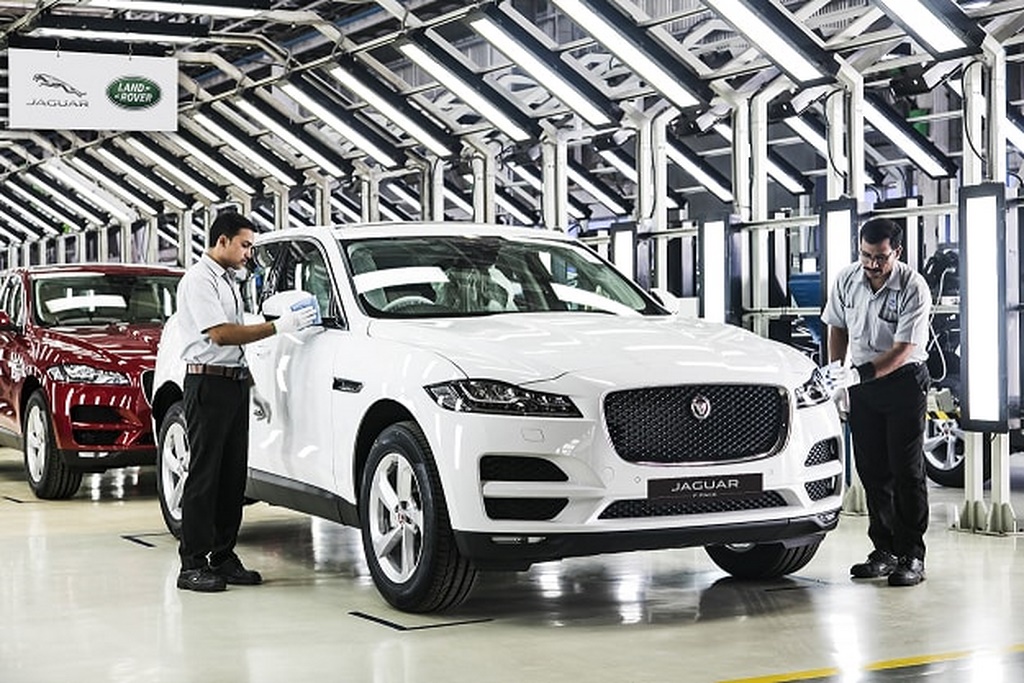The 2.0-litre engine is commuter at best, unexciting performance
Performance – Even though demand for petrol-powered luxury cars is on the rise, Jaguar has chosen to launch the F-Pace with diesel engines only, yes, you read that right, engines because the F-Pace is offered with two oil burners. Starting with the smaller displacement motor, it’s the 2.0-litre unit that is better known as the F-Pace 20d. Producing 177 BHP and 430 Nm, this powertrain is vocal and you can hear the diesel clatter at idle, something which only gets louder as you near the 5000 RPM redline. There is some lag low down so one needs to get past 1800 RPM to make good progress and the mid-range is strong with the surge in power sustaining till almost 4000 RPM.
The F-Pace 20d isn’t quick, takes 10.59 seconds for 0-100 km/hr
The F-Pace 30d is extremely fun to drive with ample grunt from the V6 oil burner
The Jaguar F-Pace 30d is quite a different animal thanks to the V6 motor belting out 296 BHP and a rather impressive 700 Nm of twisting force. The result is immediate, this engine is more refined than the smaller 20d and is much more eager too in the low-end, despite peak torque coming in later than the 20d. There is no diesel clatter but the motor is vocal, in a sporty way which makes you want to push the car to its 5000 RPM redline, power tapering off post 4500 RPM. The mid-range is the strong suit with peak power coming in at 2000 RPM and that punch staying intact all the way past 4000 RPM.
The ZF gearbox is a bit slow to respond
To put it into numbers, the F-Pace 20d does the 0-100 km/hr sprint in a leisurely 10.59 seconds while the F-Pace 30D manages to hit the ton in just 6.82 seconds. We did not test the top speed of the cars but Jaguar claims that the F-Pace 20d will hit 208 km/hr while the F-Pace 30d will manage 241 km/hr. Both engines are mated to an 8-speed automatic gearbox, offering smooth shifts but the cogs aren’t swapped at lightning speed when you need it, good thing though is, you can manually take control of things using the steering mounted paddles, although, the gearbox doesn’t respond with the same pace as BMW’s ZF or Audi’s S Tronic.
Different driving modes alter the way the Jaguar F-Pace responds
Driving Dynamics – The Jaguar F-Pace is underpinned by a lightweight aluminium platform with almost 50:50 weight distribution. It gets 4 drive modes – Normal, Eco, All Surface Progress Control (ASPC which works under 30 km/hr) and Dynamic, with each mode altering the throttle response, gearshift and steering weight of the vehicle. Naturally, the best way to extract the most out of this British SUV is to put the car in Dynamic mode and the gearbox in Sports mode (activate the paddles and it holds on to gears). The First Edition (which is offered in the 30d) gets Adaptive Dampers which electrically control the suspension and stiffen them for a more sporty drive, analysing steering and body movement a whopping 500 times a second.
Jaguar has attained a fine balance in the dynamics of this SUV
The ride and handling balance of the Jaguar F-Pace is fantastic, the suspension does a great job of ironing out the undulations of our roads but does feel firm when you drive fast over expansion joints on bridges. The rather high profile tyres are also to be praised and the rubber is wide, that coupled to the 4-wheel drive system and torque vectoring ensure that the F-Pace corners with a whole lot of eagerness. While there is body roll, it’s quite well contained and the steering is responsive and feedback rich, making corners a favourite place for this Jag. The torque vectoring system applies brakes to individual wheels when it senses a loss in traction and it simply works flawlessly to reduce understeer. The F-Pace is very stable at high speeds but there is some vertical movement post 160 km/hr. The brakes offer very good stopping power and the pedal feel is positive.




